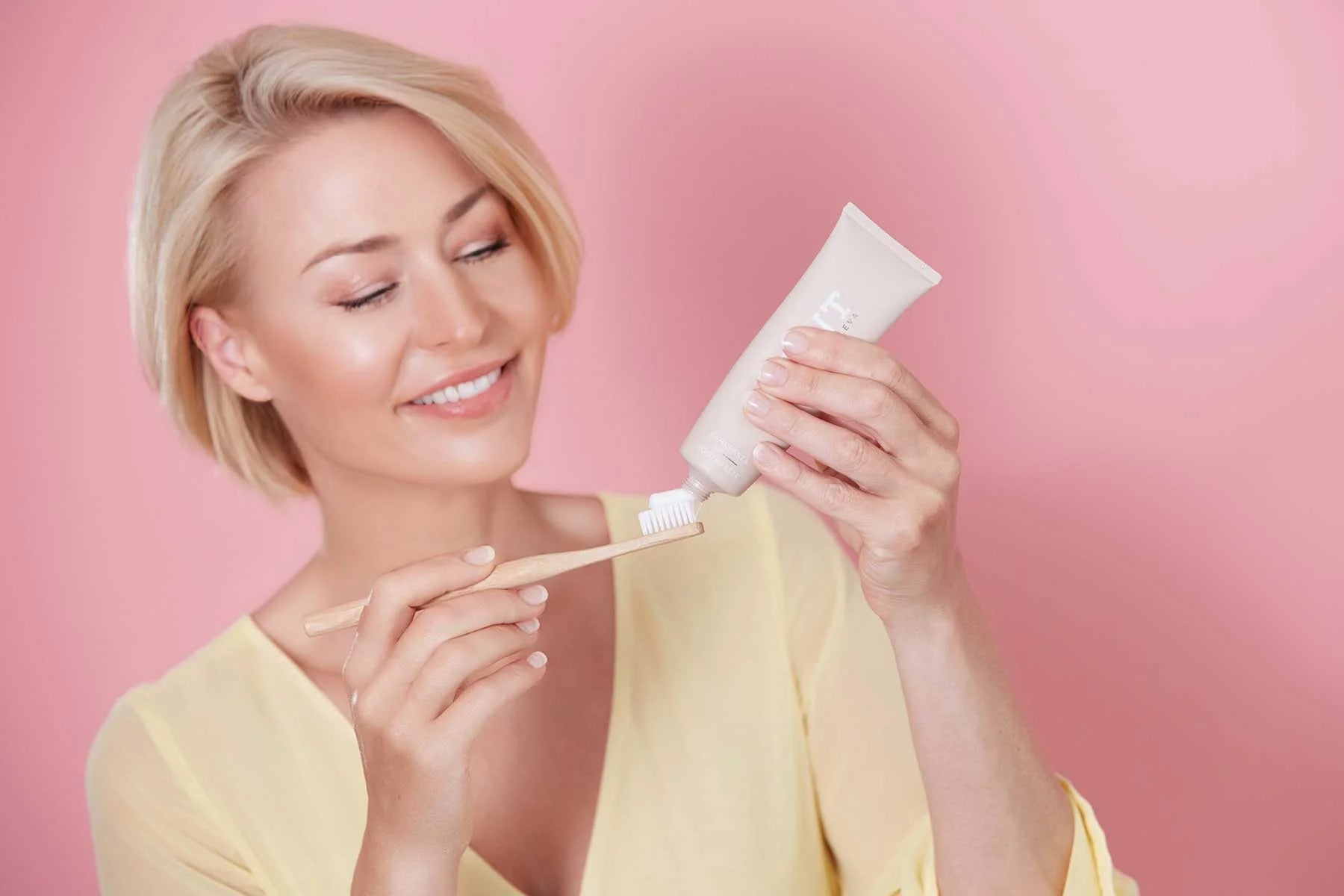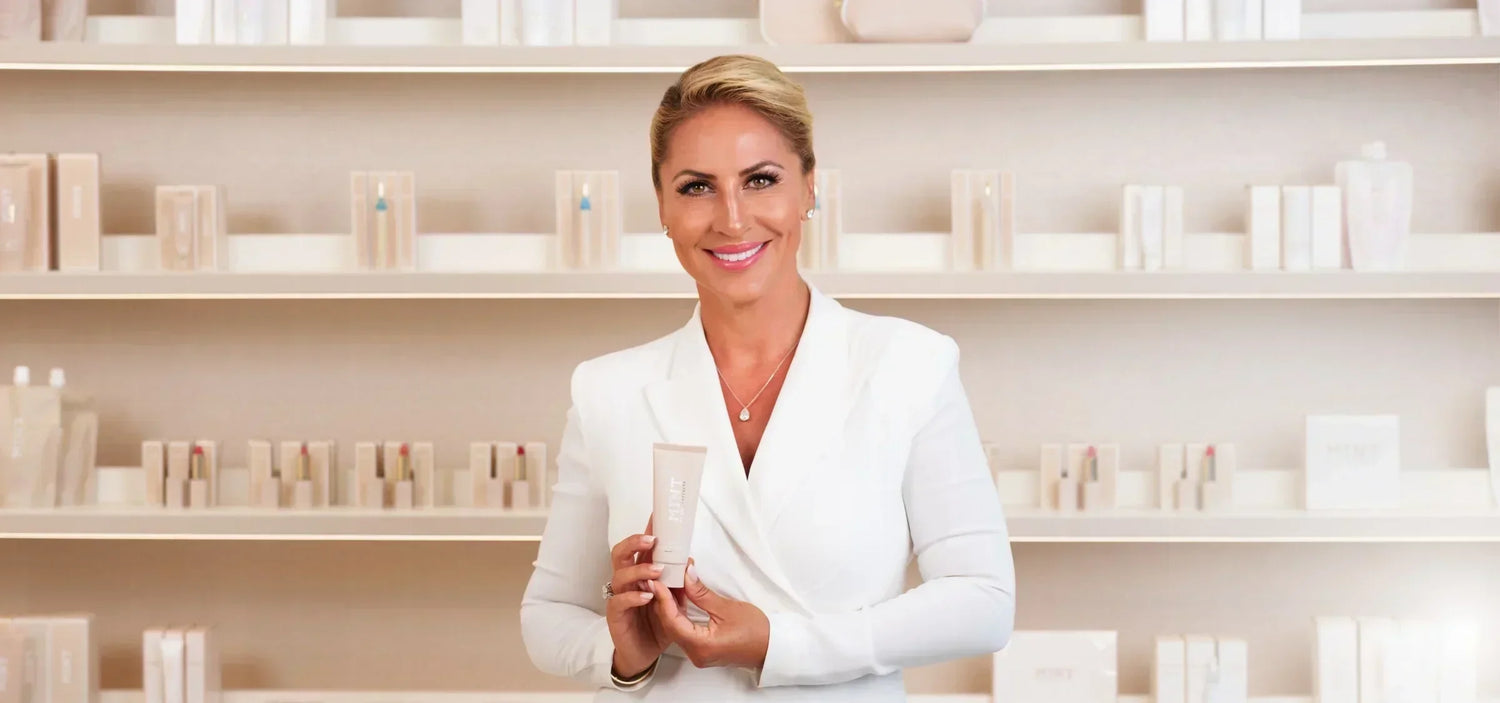Since the 1950s and the first fluoride-containing toothpaste, most people have agreed: fluoride is essential in the fight against tooth decay, effectively protects teeth, and strengthens tooth enamel. But recently, controversial discussions about fluoridated toothpastes have been on the rise. More and more voices are being raised that doubt the safety of the active ingredient and fear that it may have a health-damaging, even toxic effect.
In fact, fluoride in large quantities can be harmful to your health. However, an overdose is very unlikely, as the doses in dental care products or drinking water are very small.
Nevertheless, parents in particular are unsettled and are increasingly leaning towards fluoride-free toothpaste for their children. On the other hand, dentists raise their index finger and appeal to the importance of protecting against caries, especially in children. Well, what now?
So we are faced with the question: Should you use toothpaste with or without fluoride? And who is this variant suitable for? This debate touches on not only dental care, but also individual health considerations and preferences.
In this post, we will look at the arguments both for and against fluoride in toothpaste. Our goal is to provide you with the information you need to make an informed decision about your dental health, whether you are a fluoride advocate or not. Let’s find the best choice for your radiant smile together.
Accidental discovery: this is how fluoride got into our toothpaste
Back in the 1930s, researchers discovered that children who consumed drinking water containing fluoride were less susceptible to tooth decay. This led to the development of the first fluoride toothpaste in the United States in the 1950s. Since then, fluoride has established itself as an extremely effective caries inhibitor and protector for tooth enamel.
What are fluorides, actually?
Fluoride is a natural substance that occurs in nature. It is a chemical element that is present in trace amounts in various minerals and rocks, as well as in water and the earth's crust. Fluoride is also found naturally in some foods, such as fish and tea.
In dental care, fluoride is often used in the form of man-made compounds, such as sodium fluoride or sodium monofluorophosphate , to promote dental health and prevent tooth decay. These fluoride compounds are used in toothpaste, mouthwashes, and other dental products to increase the protection of tooth enamel. Although the fluoride in these products is in processed form, it originates from natural sources.

Fluoride in drinking water
The fluoride that is added to drinking water to prevent tooth decay is usually not chemically produced but comes from natural mineral sources. These sources contain fluoride in dissolved form. The fluoride from these natural sources is usually not added directly to the drinking water but is purified and then added to the drinking water in precisely defined concentrations to ensure optimal tooth protection.
It is important to note that the addition of fluoride to drinking water is subject to strict regulatory requirements and controls to ensure that levels are safe, effective, and do not pose health risks.
Is fluoride harmful?
The dose makes the poison, so the question is quickly answered: fluoride in the appropriate dosage, when used correctly, is absolutely harmless.
However, if large amounts of fluoride were to be swallowed, it could result in fluoride poisoning, known as fluorosis. Symptoms of acute fluoride poisoning can include nausea, vomiting, abdominal pain, and diarrhea. But don't worry, for fluoride poisoning of this magnitude, you would have to drink several liters of fluoridated water with an extremely high fluoride content, well above the legal limits, in a very short period of time. Extremely unlikely.
In the long term, excessive fluoride intake can lead to dental fluorosis, a cosmetic discoloration of the teeth that manifests itself as white or brown spots on the teeth. This can affect the appearance of the teeth, but is usually not harmful to your health.
It is important to adhere to the recommended amount of fluoride and avoid swallowing it. The right dose is crucial for the positive effect.
Fluoride toothpaste: effective in the battle against tooth decay
The use of fluoride toothpaste is a crucial measure for maintaining dental health and is strongly recommended by dentists and oral hygiene experts. Therefore, fluoride plays an important role in preventing tooth decay and other dental problems.
It strengthens tooth enamel, the outermost protective layer of teeth, making them more resistant to acid attacks that cause tooth decay. It also promotes the remineralization of already damaged areas and can even reverse early tooth decay before it becomes a larger problem.
Advantages of fluoride toothpaste:
- remineralizes and strengthens tooth enamel
- protects against harmful acids
- offers the best caries protection for teeth in the growth phase
Disadvantages of fluoride toothpaste:
- Has a toxic effect when consumed in extreme quantities
- Fluorosis may occur in the event of an overdose
- Often contains other chemical ingredients that can have an irritating effect
Toothpaste without fluoride - why are more and more people relying on it?
Fluoride-free toothpaste is becoming increasingly popular among consumers seeking alternative approaches to dental care. Many people now attach great importance to natural ingredients and environmental friendliness.
Fluoride-free toothpaste typically does not contain chemical additives such as triclosan and sodium sulfate, which are found in some conventional dental care products and are considered potentially irritating. Instead, fluoride-free products rely on natural ingredients to support oral hygiene in a gentle and natural way while protecting the environment.
The fluoride-free solution is particularly suitable for people with pain-sensitive teeth because it gently cleans the teeth and soothes the gums. This example shows again how important choosing the right toothpaste is. And we conclude how important it is to analyze your own dental needs carefully in order to integrate the appropriate care into your everyday life. Because what's good for one person doesn't mean it's good for the next.
It is clear that fluoride-free toothpastes do not offer the same caries protection as those containing fluoride. Therefore, it is even more important for those who use fluoride-free toothpaste to maintain careful dental care and a balanced diet to minimize the risk of tooth decay. People with a higher risk of tooth decay would generally not be advised to use fluoride-free toothpaste.
Nevertheless, overall, fluoride-free toothpaste offers a natural and environmentally friendly alternative that is based on personal preferences and needs and ensures comprehensive dental care and protection.
Advantages of toothpaste without fluoride:
- Natural ingredients
- Avoiding fluorosis
- Avoiding allergies and sensitivities
- Environmentally friendly
Disadvantages of toothpaste without fluoride:
- Consumers with an increased risk of tooth decay or exposed tooth necks may not have adequate protection
- Some ingredients, such as activated charcoal, can damage tooth enamel

Are you unsure? – fluoride toothpaste or toothpaste without fluoride?
Then try the MINT version: a combination with all the advantages without compromise with maximum effect and for all needs! Curious?
Our MINT Daily Essentials, the toothpaste duo for morning and evening, makes it easy for you to decide between toothpaste with fluoride and toothpaste without fluoride.
This product offers both variants, providing a balanced approach to holistic dental care. It is especially suitable for those dealing with pain sensitivity or gum problems.
1. MINT fluoride toothpaste
We recommend MINT toothpaste with fluoride for your morning routine. The fluoride in the toothpaste contributes to remineralization and acts as a kind of protective shield for the tooth. This dental care ensures you maximum protection against caries and tooth enamel during the day and cleans your teeth noticeably smoothly. For ultra-fresh breath and a clean mouth feeling all day long.
2. MINT - best toothpaste without fluoride
In the evening, pamper your teeth with MINT toothpaste without fluoride . It contains the innovative active ingredient hydroxyapatite , which, with its unique mode of action, is able to repair defective tooth enamel and build it up sustainably. In addition, the gentle cleaning soothes and sustainably strengthens irritated gums.
Both toothpastes are based on the exclusive MPT1 Ultra Polish Technology©, which enables professional cleaning of the teeth, gently whitens the teeth, and at the same time protects the important tooth enamel. Your mouth stays fresh all day long, and your teeth feel noticeably smooth and cared for, like after a professional teeth cleaning at your dentist. As you can see, it doesn't always have to be one or the other!
The MINT Daily Essentials Set is part of our MINT Classic line. This also offers other crucial products that you should definitely include in your daily dental care routine. Here are the details:
MINT Classic line with the Daily Essentials Set

Hydroxyapatite: A fluoride alternative for dental care?
In the search for alternative dental care products ,hydroxyapatite (HAP) is becoming increasingly important and has the potential to complement or even replace fluoride as an effective option for strengthening and protecting teeth.
Hydroxyapatite is a natural compound that makes up an essential component of our tooth enamel and dentin. Used in dental care products, HAP forms a protective layer on teeth and helps remineralize the tooth surface. This can help prevent tooth decay, reduce sensitivity, and minimize discoloration.
One of the big attractions of hydroxyapatite is its safety. Unlike fluoride, there is no risk of overdose or fluorosis. It is also a suitable option for people with fluoride allergies or sensitivities.
Combined with careful oral hygiene, hydroxyapatite is a promising fluoride alternative to promote your dental health and maintain your bright smile.
And this is exactly what our popular MINT toothpaste without fluoride is made from. Now take a look at the details:
MINT toothpaste without fluoride

Toothpaste for children with or without fluoride?
The question of whether children should use toothpaste with or without fluoride has caused some controversy in the dental community. Both options have their advantages and disadvantages, and the decision should be carefully considered to ensure the best dental care for your child.
Fluoride toothpaste for children
Caries Protection
Fluoride is a proven caries inhibitor and helps strengthen tooth enamel, which is particularly important for preventing tooth decay.
Recommended Concentration
For children over six years of age, the use of fluoridated toothpaste with appropriate levels of fluoride is recommended to support dental health.
Risk Management
Using fluoridated toothpaste requires careful dosing to minimize choking.
Toothpaste without fluoride for children
Allergy and sensitivity
Some children may be sensitive to fluoride, and fluoride-free toothpaste may be a good option.
The risk of overdosing
Fluoride-free toothpaste poses no risk of fluoride overdose and may be preferred for children under six years of age.
Natural ingredients
Fluoride-free toothpastes are mostly based on natural ingredients. This will particularly appeal to many parents.
Ultimately, the choice between toothpaste with or without fluoride depends on the child's individual needs and the risk of tooth decay. It is advisable to speak with a pediatric dentist to make the best decision. Regardless of the choice, good oral hygiene and regular dental care are crucial to protecting your child's bright smile.
Conclusion: Fluoride toothpaste or toothpaste without fluoride? Which is the right choice for your dental health
With or without fluoride, that is the question! We have explained the advantages and disadvantages of each variant. Ultimately, however, each of you has to decide and weigh things up for yourself. The decision is made based on personal dental care needs, susceptibilities, and other preferences.
But who says it can only be one or only the other? There is a middle ground, dental care without compromises that everyone can take responsibility for and integrate into their beauty and lifestyle programs with a smile.
So, for all of you who don't want to miss anything and simply want to use all the benefits of dental care in a compressed form, we have the MINT Daily Essentials in our portfolio. Enjoy the benefits of the two toothpastes, with and without fluoride, for your holistic dental health and a radiant smile. There's no either/here!






